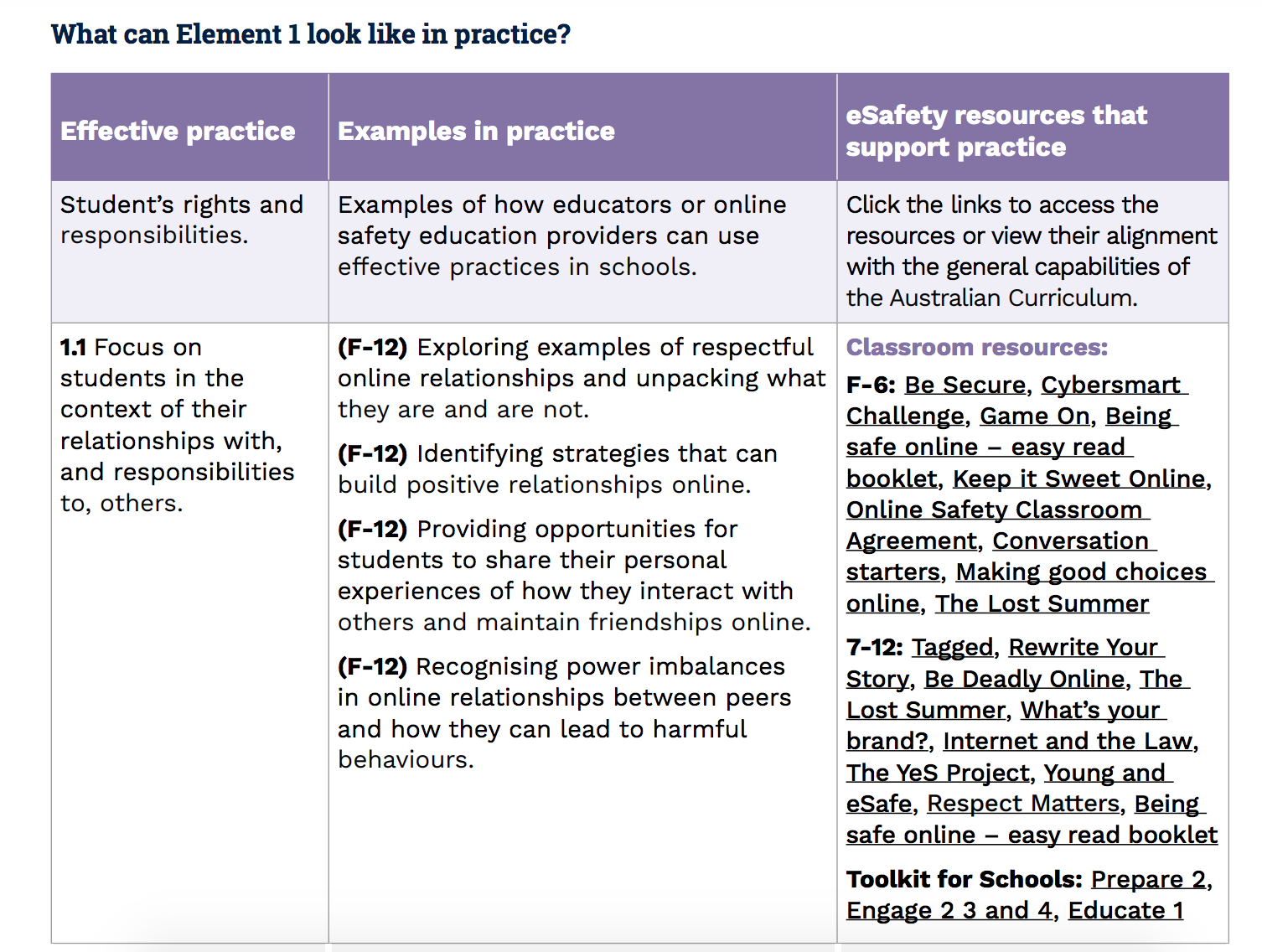Australian schools and teachers will be better equipped to help young people navigate the online world safely with the launch of a new national online safety education framework.
The Best Practice Framework for Online Safety Education, along with a suite of support materials, were developed by eSafety in consultation with over 80 education authorities, organisations and expert individuals.
eSafety Commissioner Julie Inman Grant said the framework has been designed to guide educators to help young people deal with the growing risks associated with being online.
‘Educators and parents alike need to understand that not all online safety education content and approaches are created equal. This framework helps to ensure we are providing educators with guidance on online safety programs that work,’ she says.
‘Now, more than ever, we need to ensure that young Australians are consistently being armed with the resilience and critical reasoning skills they need to discern online fact from fiction, to effectively respond to abuse and unwanted contact and to, ultimately, manage online conflict.’
The framework provides guidance on students’ rights and responsibilities in a digital age; current and emerging risks; and professional learning and capacity building for schools and their staff. It also forms part of an important component of eSafety’s work delivering on recommendations of the Royal Commission into Institutional Responses to Child Sexual Abuse. The Royal Commission called for eSafety to oversee the development of a framework and resources that support schools in creating child-safe online environments.
Using the framework in the classroom
The framework is organised into five ‘elements’. They are the overarching principles that should be used to determine whether best practice is being applied in a program.
Element 1 – Students’ rights and responsibilities
Element 2 – Resilience and risk
Element 3 – Effective whole-school approaches
Element 4 – Integrated and specific curriculum
Element 5 – Continuously improved through review and evaluation
The resource outlines existing policies and frameworks that support each element, including parts of the Australian Student Wellbeing Framework, the Australian Professional Standards for Teachers and the Australian Professional Standards for Principals.
Here’s an example of the framework as related to Element 1 – Students’ rights and responsibilities. This element focuses on recognising, acknowledging and understanding rights and responsibilities in the digital age. The framework outlines what the effective practice looks like, examples in practice and eSafety resources that support this practice.

Click here for a full version of this table and to click the hyperlinks. (PDF, 687KB)
Evidence-based practice
The framework was informed by a consultation process, undertaken by Queensland University of Technology. The research report’s lead author, Professor Kerryann Walsh, says that the framework was the culmination of a worldwide review and input from numerous school stakeholders.
‘The idea of a framework was welcomed by everyone we spoke with and there was a sense that education is a crucial part of our national online safety response and a powerful tool for behaviour change,’ Walsh says.
‘Having the new framework means that everyone in the education sector is talking the same language when it comes to understanding the issues and developing ways to enable students to be safe, positive, and well online.’
The framework and its support materials are freely available for teachers and schools to download: https://www.esafety.gov.au/educators/best-practice-framework



